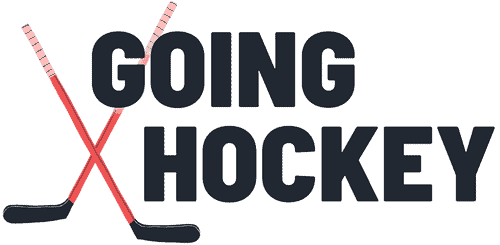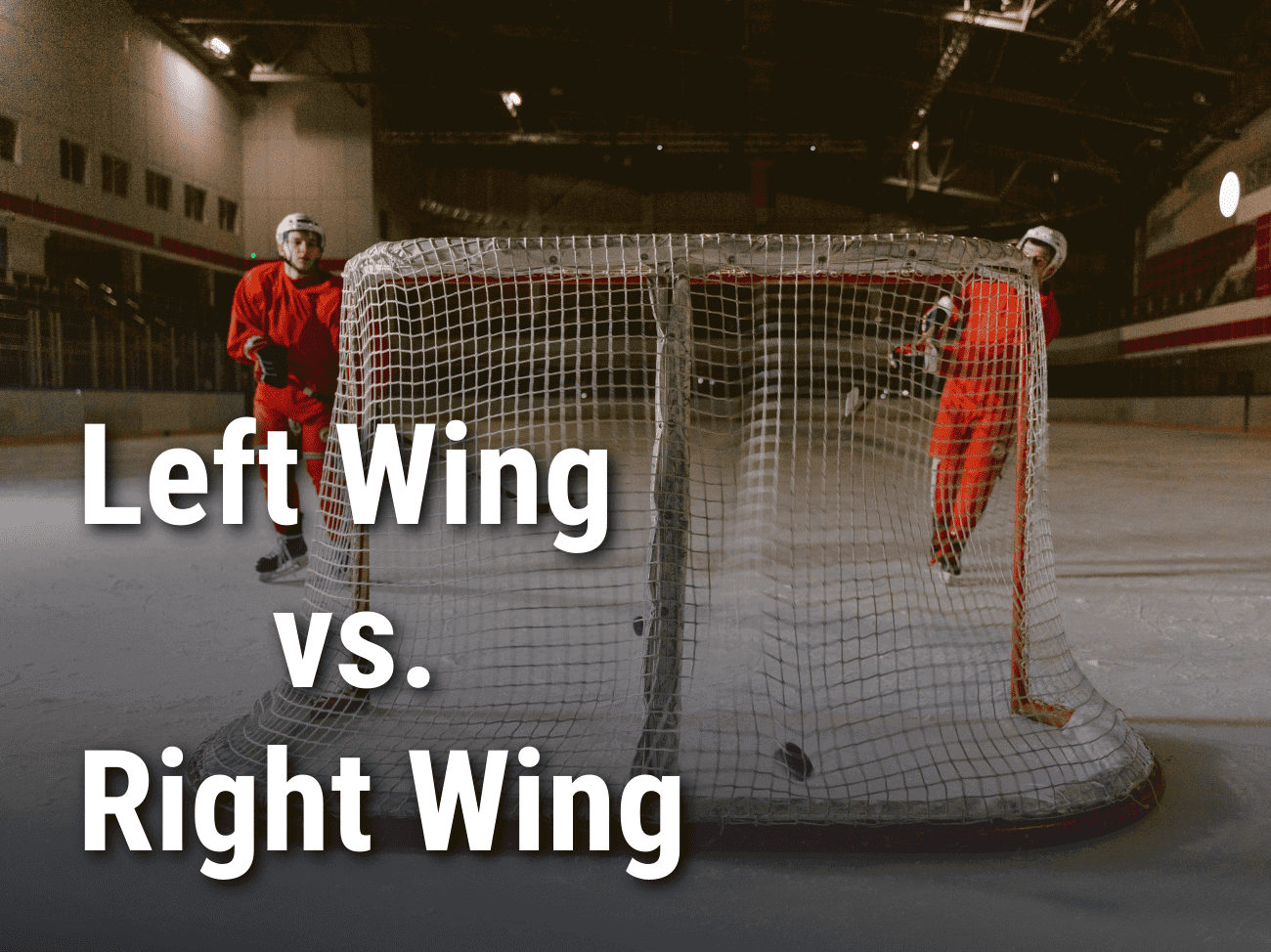Choosing the optimal position in hockey is a pivotal decision that can significantly shape a player’s performance and impact on the ice. For aspiring hockey players and seasoned veterans alike, the question of whether to play left wing or right wing demands careful consideration and a deep understanding of the game’s nuances.
Left wing vs. right wing, the differences:
Left wing and right wing in hockey are fundamentally identical positions, differing only on the side of the ice they play on. Both contribute to the same aspects of the game, mainly playmaking and scoring.
Table of Contents
ToggleLeft Wing vs. Right Winger
Left wing and right wing in hockey are identical positions in terms of their fundamental roles and responsibilities. They differ only in the side of the ice they occupy.
Both positions contribute to offensive plays, defensive efforts, forechecking, and backchecking, and they adapt to special teams situations, emphasizing teamwork and adaptability regardless of their specific placement on the ice.
Should I Play Left Wing Or Right Wing In Hockey?
Deciding whether to play left wing or right wing depends entirely on whether you prefer playing on your strong-hand side or off-hand side.
The off-hand side refers to playing on the side of the ice which is opposite to the orientation of your shot, i.e., a lefty, playing right wing, or a righty, playing left wing.
Playing on your off-hand side in hockey offers an advantage during offensive rushes as it enables players to cut to the center of the ice and shoot more effectively due to the positioning of their stick and body, but it can be a disadvantage when breaking out of the defensive zone as it limits their ability to make quick, accurate passes along the boards and can lead to turnovers under pressure.
Conversely, playing on your strong-hand side in hockey provides an advantage when breaking out of the defensive zone, allowing players to make quick, accurate passes along the boards and maintain possession, but it can be a disadvantage during offensive rushes as it limits the ease of cutting to the center of the ice and shooting effectively, showcasing the trade-offs between defensive stability and offensive creativity.
While left wingers in hockey are often left-handed shooters and right wingers are typically right-handed shooters due to the advantage of positioning their stronger side toward the center of the ice, there are numerous players who defy this convention, showcasing that skill and adaptability can transcend handedness and still contribute effectively from either wing position.
Here are five great NHL wingers who played on their off-hand side:
- Patrick Kane
- A left-handed shooter who typically plays on the right wing, known for his incredible playmaking and offensive skills.
- Alex Ovechkin
- A right-handed shooter who typically plays on the left wing, renowned for his unparalleled goal-scoring talent and career with the Washington Capitals.
- Mikko Rantanen
- A left-handed shooter who often plays on the right wing, known for his scoring ability and physical presence.
- Artemi Panarin
- A right-handed shooter who plays on the left wing, known for his exceptional puck-handling, passing, and offensive contributions with teams like the New York Rangers.
- Adrian Kempe
- A left-handed shooter who plays on the right wing, recognized for his speed and versatility as a forward.
These players showcase how playing on their off-hand side can enhance their effectiveness in specific roles on the ice.
What Is The Difference Between A Center And A Wing In Hockey?
In ice hockey, the positions of centers and wings refer to different roles and responsibilities on the team. Here’s a breakdown of the differences between centers and wings, considering various aspects of the game:
Position on the Ice
- Centers
- Centers typically line up in the middle of the ice and are responsible for taking faceoffs at the start of play. They are positioned between the two wings and often play a key role in both offensive and defensive plays.
- Wings
- There are two types of wings: left wings (LW) and right wings (RW). They line up on either side of the center. Wings tend to focus more on the offensive aspects of the game and work along the boards and in front of the net.
Defensive Responsibilities
- Centers
- Centers are expected to be more involved in the defensive play, supporting the defensemen and helping to break out of the defensive zone.
- Wings
- While wings also have defensive responsibilities, they often focus more on creating offensive opportunities and less on direct defensive duties.
Two-Way Play
- Centers
- Centers are often considered to be two-way players, excelling both offensively and defensively. They contribute to scoring while also helping to shut down opponents’ offensive efforts.
- Wings
- Wings can also play a two-way role, but they are generally more specialized in either offensive or defensive play.
Scoring and Offensive Contributions
- Centers
- Centers are often playmakers and are responsible for setting up scoring opportunities. They may also take shots themselves and contribute directly to goal-scoring.
- Wings
- Wings often have a primary focus on scoring goals. They tend to be the finishers of plays, using their shooting skills to put the puck in the net.
Blocking Shots
- Centers
- While centers may block shots, it’s not as common a responsibility for them as it is for wingers.
- Wings
- Wingers are more likely to be involved in shot-blocking situations, especially when they are helping out in the defensive zone.
Faceoffs
- Centers
- Centers are the primary players responsible for taking faceoffs. Winning faceoffs is crucial for gaining possession of the puck at the start of plays.
- Wings
- Wings may occasionally take faceoffs, especially if the center gets thrown out of the circle, but it’s not their main responsibility.
Positioning
- Centers
- Centers often position themselves all over the ice, transitioning between offense and defense. They are expected to be versatile and adaptable in their positioning.
- Wings
- Wings tend to stick more to their respective sides of the ice, staying closer to the boards and focusing on their offensive or defensive roles from those positions.
Forechecking and Backchecking
- Centers
- Centers play a significant role in forechecking (pressuring the opponent in their defensive zone) and backchecking (retrieving the puck and helping out defensively).
- Wings
- Wings also participate in forechecking and backchecking, but emphasis may be placed on forechecking depending on their specialization.
In summary, centers and wings have distinct roles and responsibilities in ice hockey. Centers tend to be more versatile players involved in both offensive and defensive aspects, while wings are often more specialized in scoring or defensive play based on their position.
Why Do So Many NHL Players Shoot Left?
Many NHL players shoot left because as children they learned to passively hold the hockey stick in their dominant hand (right hand) while initially learning how to skate.
When young players start learning hockey, they often focus on skating skills initially. At this stage, their primary interaction with the stick is relatively passive compared to the complexity of skating.
During this early phase, players tend to hold the stick more casually, with their dominant hand often naturally resting on top of the stick. This initial passive exposure can lead to a player’s preference for holding the stick with their dominant hand on top, eventually translating into a left-handed shooting stance for right-handed individuals.
Thus, there are many hockey players who are left handed in hockey but actually right handed in other sports. For example, there are many left handed hockey players who actually swing right handed in golf, baseball, tennis, etc.
The inverse is true for naturally left handed individuals – in hockey they are often right handed. Again, this is because, as children, they learned to passively hold the hockey stick in their dominant hand (left hand) causing them to develop a right handed shot.


Leave a Reply